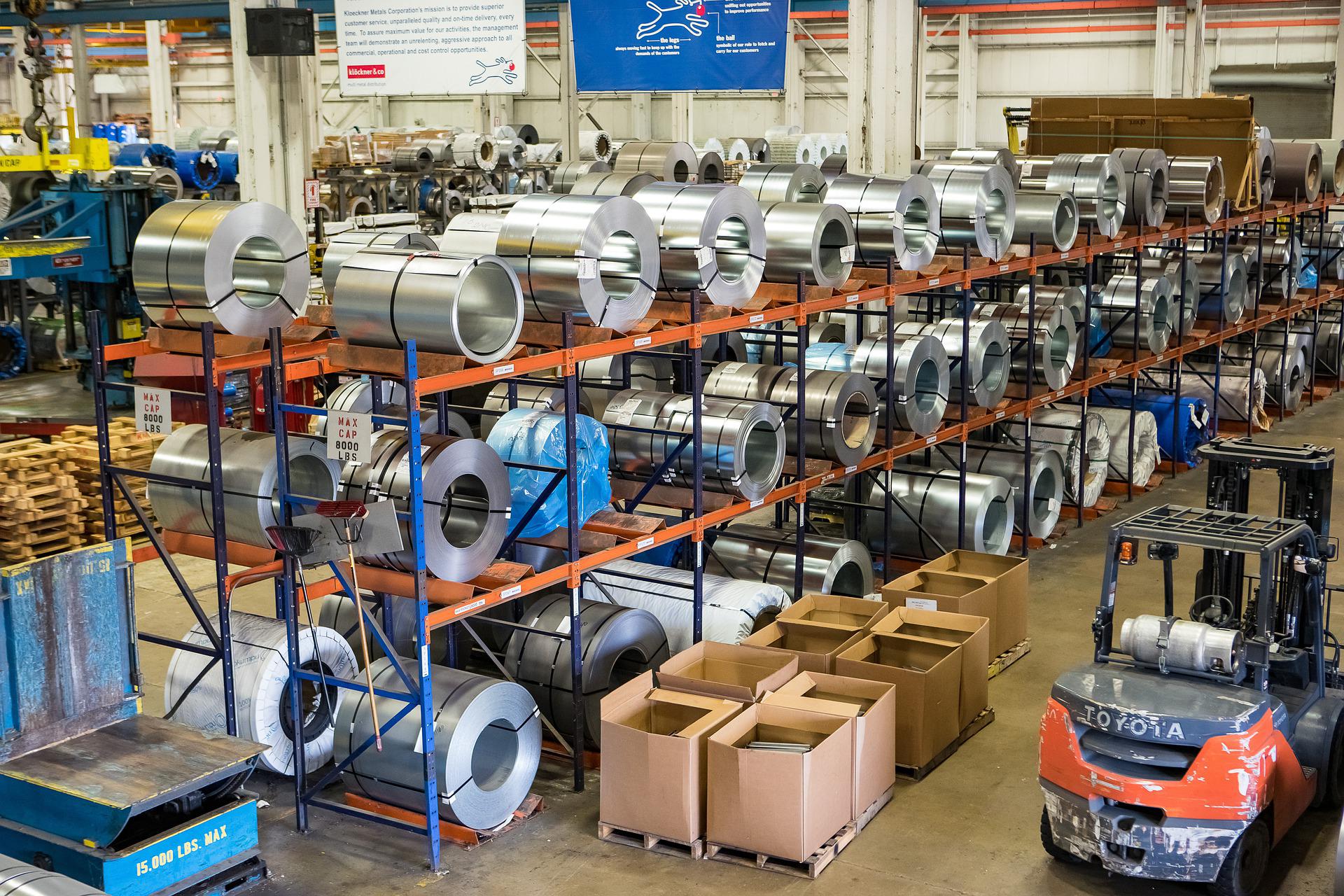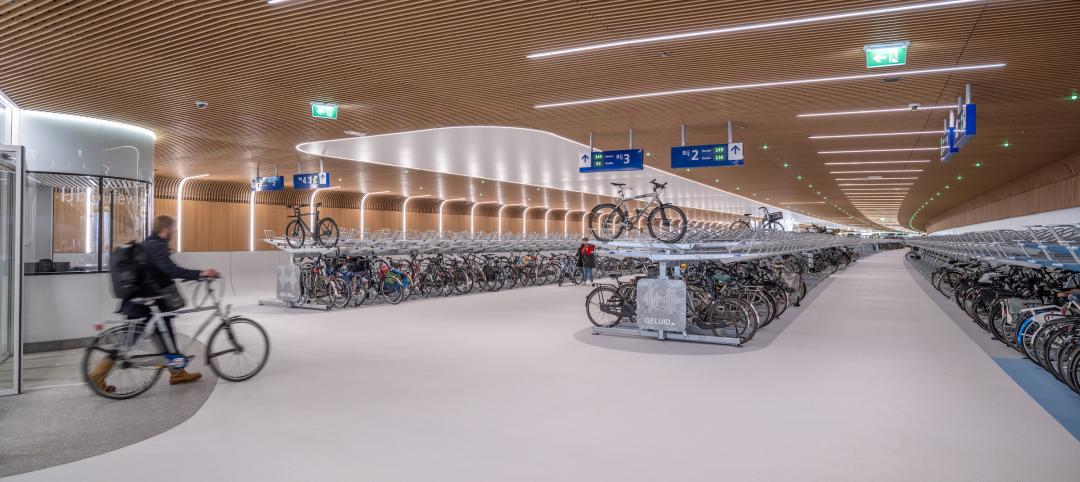Anyone who has taken even a passing glance at the news over the last year has become acutely aware of the supply chain. Empty grocery store shelves may be the first image that springs to mind, but when it comes to the construction industry, the discussion is a little more nuanced.
First, let’s define our terms. The true supply chain is material tracking from cradle to grave. It is an entire system designed to identify a need, acquire the need, and deliver the need. In the just-in-time (JIT) model used by companies from Walmart to Dell to the biggest names in construction, the system has minimal lag time and little room for inefficiency.
In a consumer-facing JIT inventory system, say for computers, a company would have just enough parts on hand to fulfill the current need. Customers order, the company puts together the product and ships it out. The system ideally works together in perfect harmony. Until it doesn't. Just one hitch in the system, let alone several, and the entire ecosystem falls apart.
In construction, JIT has been the modus operandi for decades. The material is delivered to site as and when it is needed. This model does have a number of benefits of course—lower required cashflow upfront and a limited need for storage and security. But, as we saw starting in March of 2020, unforeseen events can have a catastrophic ripple effect on a JIT model.
As widely used as JIT has been, it has never been truly efficient. There are hundreds of moving parts and risk baked into the calculus. The model didn’t need to account for extreme employment variables, local policy restricting movement and workforce, increased costs associated with delays, shortages and fluctuating commodities. In the old model, LEAN upgrades helped to tighten up the system, but was never intended to account for all of these global variables.
As we see it here at Austin, the last two years have given us the opportunity to reinvent how construction works, how we can own the process of supply chain, and how we can pass on what we’ve learned to our clients.
A Supply Chain House of Cards
The disruption to the construction supply chain has gone far beyond just difficulty obtaining materials. Frozen finances, limited workforce and shortened workforce weeks have all stopped projects in their tracks. And that’s just on-site—on the manufacturing side, staff shortages and difficulties sourcing raw material are compounding the challenges for projects across the country.
The truth is that supply chain problems will likely get much worse if the entire system doesn’t change. COVID may have been the reason that we put a magnifying glass on the inefficiencies and risk inherent to the JIT model, but the system was always very fragile. Now that we see it can come down as quickly as a house of cards, it’s time for a new way of managing the construction supply chain. A holistic view that combines logistics, risk mitigation and a new procurement process all tied together with analytics.
A New Way Forward for the Construction Supply Chain
In the traditional model, supply chain issues would often trickle down to the sub-contractors. GCs, subs and trades would procure parts from a local supplier and, more often than not, the owner wouldn’t know or care, as long as the project was getting done. That is simply is not a viable workflow any longer as local part suppliers are rarely an option and cash flow is a real issue for even medium-sized GCs.
So how are we fixing this? How are we continuing to get projects done in this climate? We are customizing our project management process for each client but, in general, we are using a number of tools and risk-mitigation strategies and looking at the supply chain in a holistic way.
The biggest weapon in our arsenal at the moment is early-stage procurement. We are going out at the beginning of a project and instead of making purchases for each phase, we are getting all the materials for the project on site and storing it. We get our hands on all the materials, we stock it, we store it and protect it on campus for as long as necessary. We are procuring extra equipment for material storage like forklifts and box trailers and adding resources to get everything moved around and in the right place. On one of our largest projects, we have essentially created our own “microport” with highly detailed and trackable logistics to keep everything running smoothly and on time.
It takes experience and expertise to make this all work efficiently, but the new model gives us price protection in a volatile marketplace. It gives us the peace of mind of accounting for everything we need ahead of time. And it gives us more control in an increasingly uncertain world.
New Roadblocks to a New Process
Clearly, revolutionizing a model that has been in place for decades won’t come without snags. With that said, none of the challenges we’ve faced so far have been insurmountable. But they do require our clients to look at the supply chain in a new way. For instance, upfront procurement requires different financing and more funding at the beginning.
And of course, the biggest and most fundamental challenge of all: cash flow. Yes, this way of handling the supply chain costs money in exchange for on-time project delivery. On pre-pandemic contracts, none of these costs were accounted for. In private deals, GCs are issuing change orders and for municipal contracts, we’re starting to see more COVID-specific funds coming into play.
Regardless of these potential roadblocks, logistics and researching manufacturers has become a hallmark of our risk mitigation strategy for our clients and for ourselves. We have essentially become our own in-house logistics company, all in the name of keeping our clients’ projects on track.
In the long-run, it won’t just be Austin thinking this way--supply chain analysis and mastery is going to become a top-of-mind concern for everyone in the industry from owners to trades, as well as a crucial component in getting large-scale projects done on time well into the future.
ABOUT THE AUTHOR
Jason Earnhardt is a Supply Chain Manager for Austin Commercial. Combining a background in finance, analysis and construction, he has revolutionized how our clients look at risk mitigation, logistics and supply chain management.
Related Stories
3D Printing | Apr 11, 2023
University of Michigan’s DART Laboratory unveils Shell Wall—a concrete wall that’s lightweight and freeform 3D printed
The University of Michigan’s DART Laboratory has unveiled a new product called Shell Wall—which the organization describes as the first lightweight, freeform 3D printed and structurally reinforced concrete wall. The innovative product leverages DART Laboratory’s research and development on the use of 3D-printing technology to build structures that require less concrete.
Smart Buildings | Apr 7, 2023
Carnegie Mellon University's research on advanced building sensors provokes heated controversy
A research project to test next-generation building sensors at Carnegie Mellon University provoked intense debate over the privacy implications of widespread deployment of the devices in a new 90,000-sf building. The light-switch-size devices, capable of measuring 12 types of data including motion and sound, were mounted in more than 300 locations throughout the building.
Architects | Apr 6, 2023
New tool from Perkins&Will will make public health data more accessible to designers and architects
Called PRECEDE, the dashboard is an open-source tool developed by Perkins&Will that draws on federal data to identify and assess community health priorities within the U.S. by location. The firm was recently awarded a $30,000 ASID Foundation Grant to enhance the tool.
Cladding and Facade Systems | Apr 5, 2023
Façade innovation: University of Stuttgart tests a ‘saturated building skin’ for lessening heat islands
HydroSKIN is a façade made with textiles that stores rainwater and uses it later to cool hot building exteriors. The façade innovation consists of an external, multilayered 3D textile that acts as a water collector and evaporator.
Women in Design+Construction | Apr 5, 2023
Carole Wedge, former Shepley Bulfinch President and CEO, retires after 37 years
Wedge’s 37-year career at Shepley Bulfinch evolved a historic firm into a national design practice.
AEC Innovators | Mar 27, 2023
Leading architecture, engineering firm HED appoints new co-CEOs
As children of immigrant families, Van Herle and Suarez will bring a diverse perspective into a historically underrepresented industry and advance the firm’s mission of creating a positive impact for clients, communities, and the world.
Transportation & Parking Facilities | Mar 23, 2023
Amsterdam debuts underwater bicycle parking facility that can accommodate over 4,000 bikes
In February, Amsterdam saw the opening of a new underwater bicycle parking facility. Located in the heart of the city—next to Amsterdam Central Station and under the river IJ (Amsterdam’s waterfront)—the facility, dubbed IJboulevard, has parking spots for over 4,000 bicycles, freeing up space on the street.
Building Tech | Mar 14, 2023
Reaping the benefits of offsite construction, with ICC's Ryan Colker
Ryan Colker, VP of Innovation at the International Code Council, discusses how municipal regulations and inspections are keeping up with the expansion of off-site manufacturing for commercial construction. Colker speaks with BD+C's John Caulfield.
AEC Innovators | Mar 3, 2023
Meet BD+C's 2023 AEC Innovators
More than ever, AEC firms and their suppliers are wedding innovation with corporate responsibility. How they are addressing climate change usually gets the headlines. But as the following articles in our AEC Innovators package chronicle, companies are attempting to make an impact as well on the integrity of their supply chains, the reduction of construction waste, and answering calls for more affordable housing and homeless shelters. As often as not, these companies are partnering with municipalities and nonprofit interest groups to help guide their production.
Modular Building | Mar 3, 2023
Pallet Shelter is fighting homelessness, one person and modular pod at a time
Everett, Wash.-based Pallet Inc. helped the City of Burlington, Vt., turn a municipal parking lot into an emergency shelter community, complete with 30 modular “sleeping cabins” for the homeless.

















